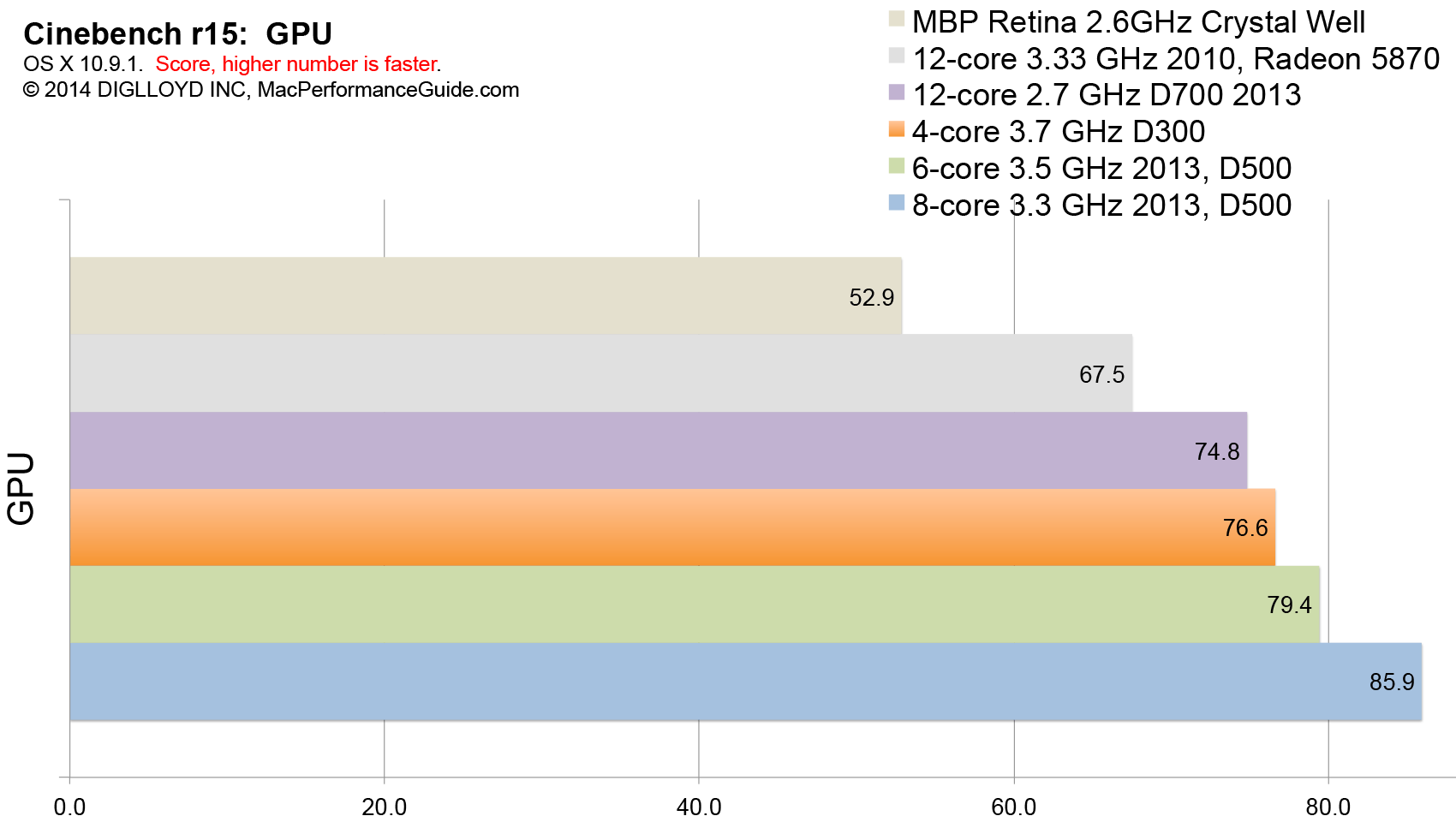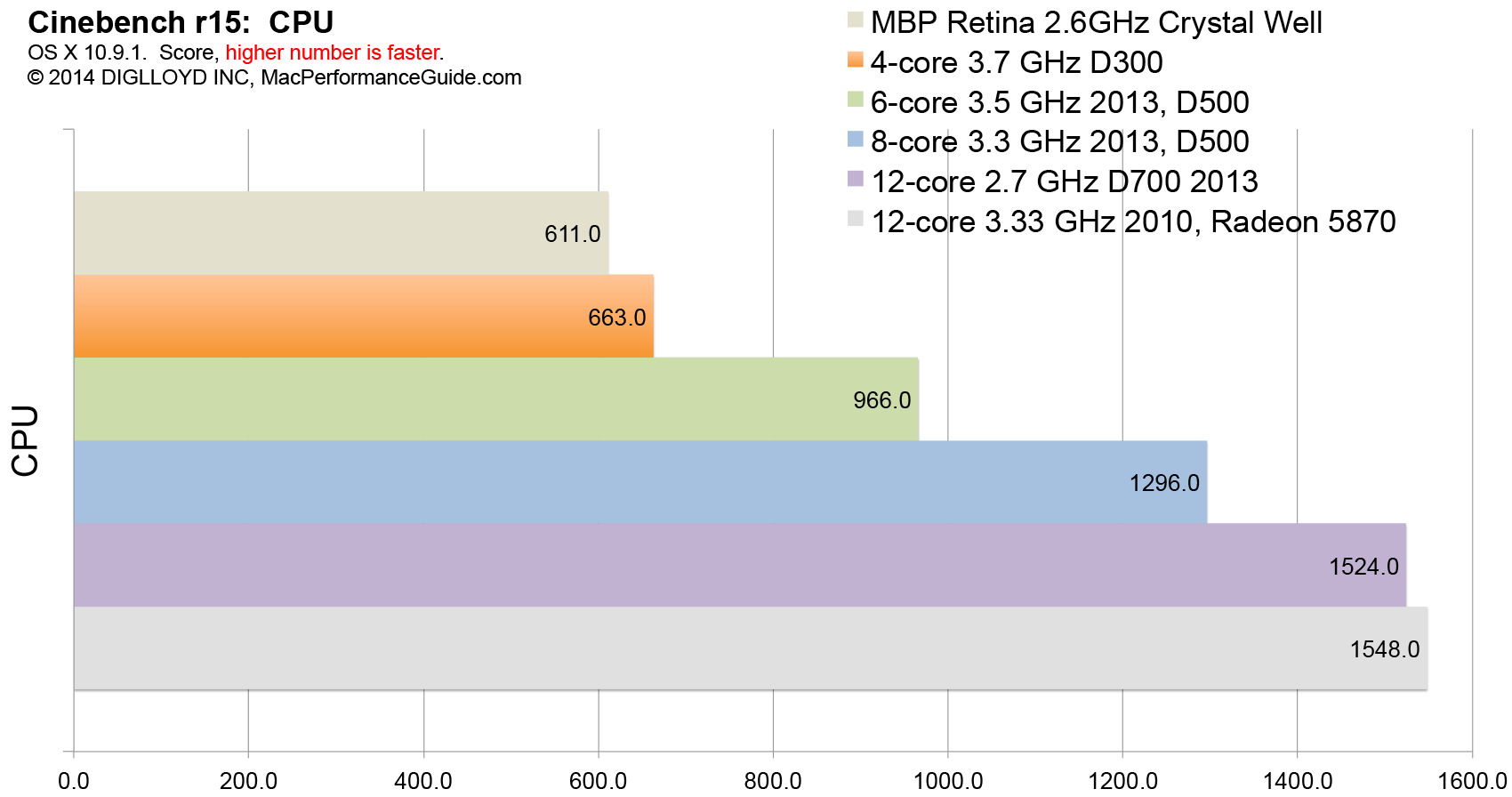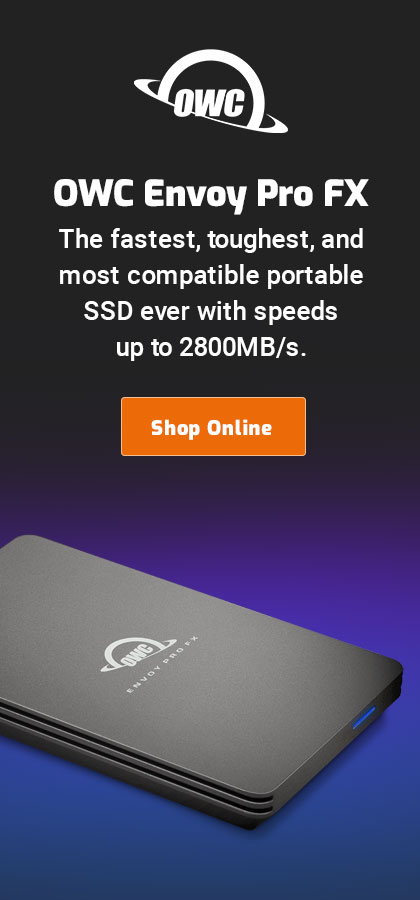
|

|

|

$610 SAVE $110 = 15.0% ZEISS 32mm f/1.8 Touit Lens for FUJIFILM X OUT OF STOCK in Lenses: Mirrorless
|

|
2013 Mac Pro: Cinebench
Related: 2013 Mac Pro, gear, GPU, Mac Pro, Macs, memory, video tech
Get Mac Pro at B&H Photo. See also MPG’s computer gear wishlist as well as diglloyd-recommended performance packages for Mac Pro.
A big thanks to Other World Computing for loaning MPG the upgraded 2013 Mac Pro! Ditto for B&H Photo for loaning the 6-core Mac Pro. 64GB memory kit for 2013 Mac Pro provided by OWC.
Introduction
Cinebench tests both GPU and CPU performance with various rendering tasks.
The benchmarks are misleading when applied to real worse results with photography applications. This does not make the benchmark results incorrect; the tests are what they are. But they diverge so much from actual applications that they offer no credible guidance for purchasing decisions for any particular workflow, or even a general workflow.
Results
See the test machine configurations.
Cinebench GPU benchmark
The results suggest that the test suite is using only one of the two GPUs on the Mac Pro system and indeed the display indicates only one GPU noted.
The results are very coarsely consistent in a relative ranking sort of way with respect to relative performance on GPU-friendly photography applications, but the MacBook Pro obtains a much higher ranking than it deserves here.
Why are the D700 GPUs slower than the D500 GPUs? Why are the D500 GPUs slightly slower than D300 GPUs? Are they somehow tied to CPU clock speed also? Or is it a driver or benchmarking bug? Results with Cinebench show 2-3% variation run to run, so the benchmark itself might be flawed. Or just plain flawed, somehow.
During the GPU (OpenGL) test, Cinebench uses one CPU core almost fully, so it’s possible that the CPU clock speed interacts with the GPU test in some way.
Barefeats.com reports a similar confounding result in the FCPX Render Gaussian Blur test and others (D700 GPUs test slower than D500 GPUs).

Cinebench CPU benchmark
Real world tests of photography applications show just how misleading benchmarks can be, with the 12-core 3.33 GHz 2010 Mac Pro looking great here—yet it trails in nearly all the real world tests!


 diglloydTools™
diglloydTools™

